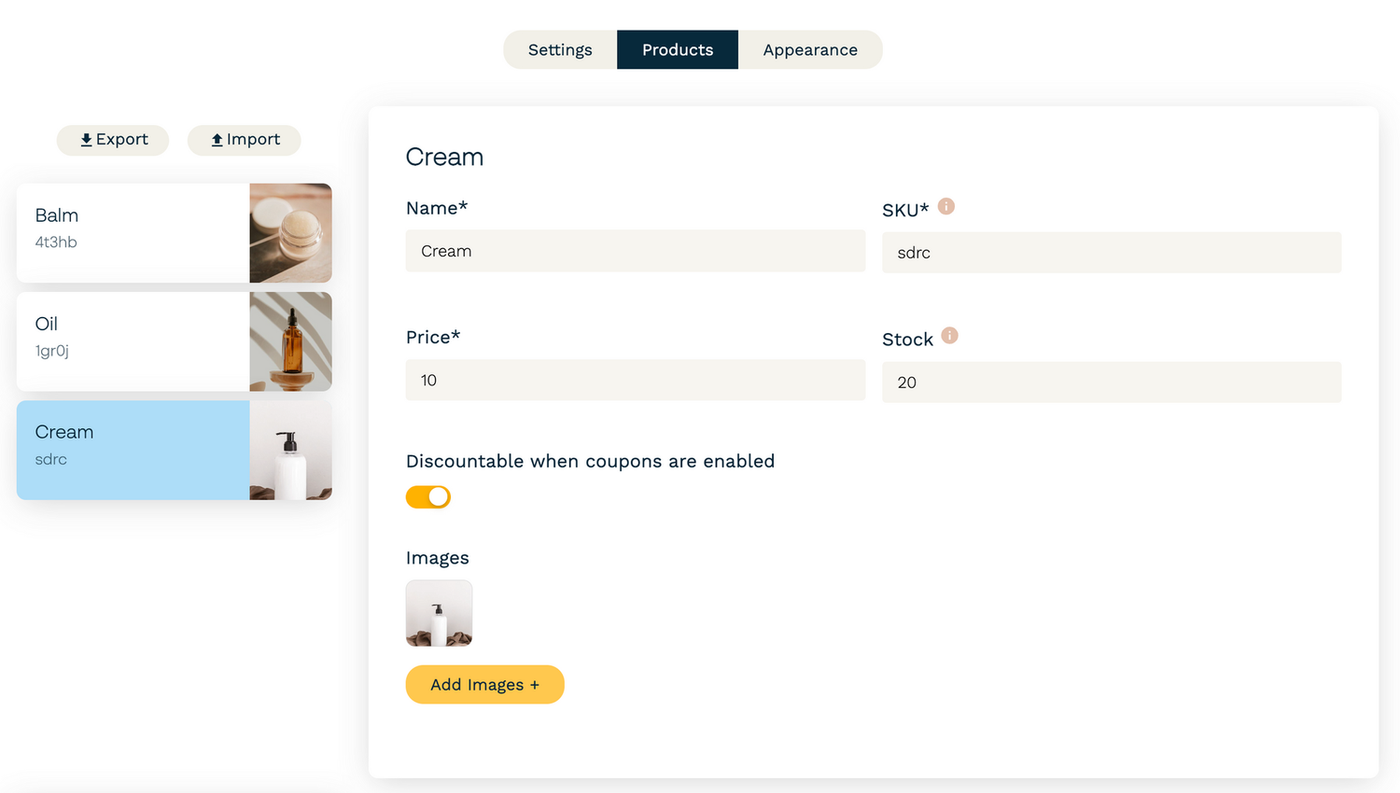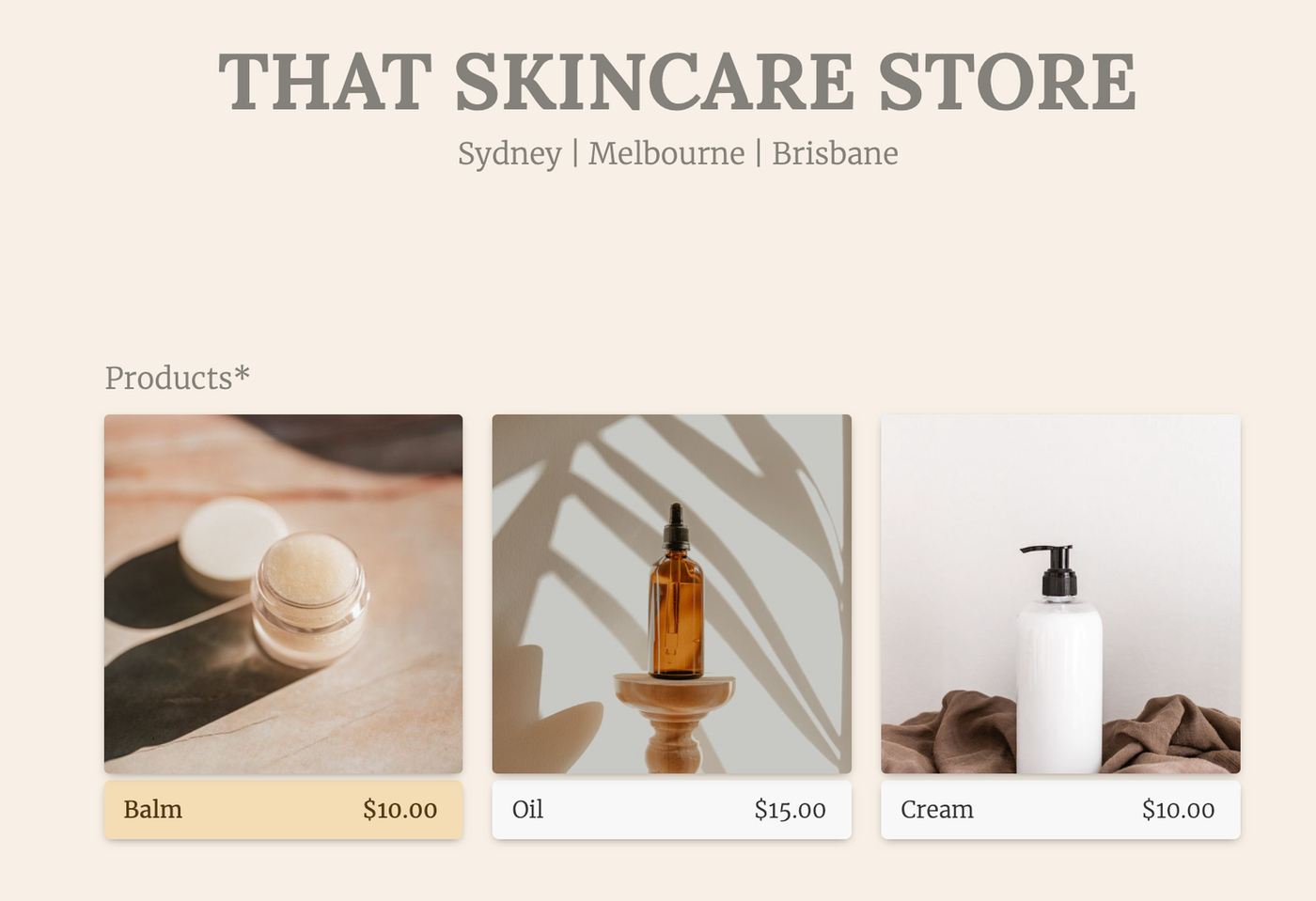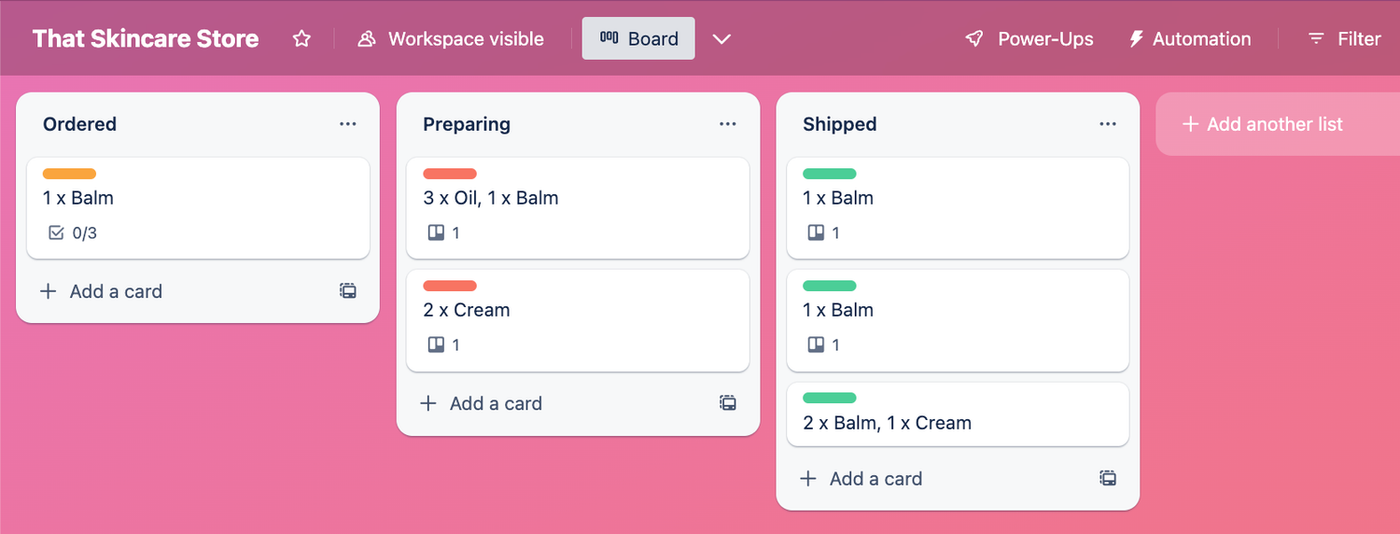
All Solutions

Explore all the solutions you can create with Paperform: surveys, quizzes, tests, payment forms, scheduling forms, and a whole lot more.
See all solutions











Connect with over 2,000 popular apps and software to improve productivity and automate workflows
See all integrationsSolutions
All Solutions

Explore all the solutions you can create with Paperform: surveys, quizzes, tests, payment forms, scheduling forms, and a whole lot more.
See all solutionsIntegrations

Connect with over 2,000 popular apps and software to improve productivity and automate workflows
See all integrationsResources
What is branded dropshipping and how do you get started?

Dropshipping is an attractive sales model. In fact, it's the sales model of choice for about 33% of all online stores. After all, who wouldn't want to start an online store without worrying about inventory management or shipping logistics?
But, for all the hype around dropshipping, the reality is that only around 10-20% of dropshipping businesses succeed. Among an neverending sea of competitors, it's difficult to make your dropshipping store stand out—which is where branded dropshipping comes in.
What is branded dropshipping?
In the traditional dropshipping model, retailers work with third-party suppliers to handle inventory and order fulfilment. Products are generic, and often offered by multiple retailers. The copper measuring spoons depicted in the image below are the perfect example. The products are identical, and sold for drastically different prices across dozens of websites.
 The same measuring spoons sold for different prices across multiple websites (source: Google)
The same measuring spoons sold for different prices across multiple websites (source: Google)What makes dropshipping so alluring as an ecommerce business model (i.e., the low effort) is also its biggest weakness. For dropshippers, there's minimal chance to differentiate from competitors through things like presentation, packaging and branding. Since the supplier manages the products, they also have limited control over product quality and shipping times.
Branded dropshipping takes the basic dropshipping model and elevates it. Instead of selling generic cookie-cutter products, you're able to customize them with your own packaging and branding elements to set your products apart from the crowd.
And by adding a personalised touch to products and packaging, dropshippers can can establish a stronger brand identity, and exercise greater control over product quality and the overall customer experience.
How does branded dropshipping work?
Branded dropshipping works just like regular dropshipping. The only difference is you'll have to find suppliers who offer private labels on products. Once you select the products that align with your brand, they'll apply your brand logo to them.
Then, whenever someone places an order on your online store, the supplies ships the product directly to them. It's the perfect solution for those looking to create a unique brand experience, without getting bogged down in logistical nightmares.
The benefits of branded dropshipping
We've covered the broad benefit of branded dropshipping—the ability to brand your products—but here are some more reasons you might want to jump aboard the branded dropshipping train:
- Enhanced brand identity: As we covered above, branded dropshipping allows you to create a unique brand image across all customer touchpoints. This not only fosters customer trust and loyalty, but also sets your business apart from all those competitors.
- Reduced risk and investment: Just like with regular dropshipping, you don't need to maintain inventory or handle shipping logistics. This minimizes upfront costs, lowers the risk of unsold stock, and enables you to test products without major financial commitments.
- Increased perceived value: By offering high-quality, branded packaging and customized products, your business can command higher prices and increase perceived value, leading to better profit margin potential over normal dropshipping.
- Scalability: The dropshipping model allows for easy expansion, as you don't need to worry about storage space or inventory management. As your business grows, you can add more products or suppliers without significant operational challenges.
- Customer retention: A strong brand identity helps in building long-lasting customer relationships. Branded dropshipping can lead to repeat purchases and word-of-mouth referrals, further bolstering your business's growth and success.
The potential drawbacks of branded dropshipping
No business model is perfect! Branded dropshipping has its fair share of benefits, but it's not all sunshine and rainbows. There are some drawbacks, and risks, too:
- Lower profit margins: Since dropshipping suppliers handle inventory and order fulfillment, they charge a fee for their services. This means that retailers often have to settle for lower profit margins compared to traditional retail models where they have more control over sourcing and pricing. Supplies may charge more to add branding, which lowers margins even more.
- Quality control issues: Since retailers don't handle the products directly, they have limited control over product quality, which may lead to customer dissatisfaction or returns if the supplier delivers subpar items. This is even more pronounced when the customer associates these issues with your brand.
- Shipping complexities: Dropshipping suppliers may be located in different regions, leading to varying shipping times and costs. If a customer orders multiple products from different suppliers, shipping fees and delivery times can become complicated and negatively impact customer experience.
- High competition: The ease of setting up a dropshipping store has led to a highly competitive landscape, making it challenging for retailers to stand out and capture a significant market share without a strong value proposition or niche. Even with your own branded products, you'll still have a lot of generic competition to manoeuvre.
- Supplier reliability: Building a successful dropshipping business requires finding trustworthy and efficient suppliers. Working with unreliable suppliers can lead to delayed shipments, stockouts, or poor-quality products, all of which can harm your brand reputation and customer satisfaction.
- Limited customization and branding: While branded dropshipping offers more customization than regular dropshipping, personalization is more limited than a unique product built from scratch.
The best way to combat these challenges? Thoroughly research supplies, work on a strong brand identity, and focus on exceptional customer service.
How to create a branded dropshipping store
Sorry to break the news, but there's no blueprint to guarantee your dropshipping store will be a resounding success. However, there are some best practices to help you get started.
1. Choose a unique and memorable brand name
Your brand name is the first impression customers have of your business. Select a unique and memorable name that represents the values and products you offer. A good name should be easy to pronounce, spell, and remember. Research and avoid potential trademark infringements to prevent future legal issues.
Need some inspiration? Use our Business Name Generator for some ideas.
2. Develop a visual identity
A brand is more than a name. It includes your logo, color scheme, typography, and overall design aesthetic. This should be consistent across your website, packaging, and social media profiles.
You can invest in professional design services to create visually appealing brand assets and a logo. Fiverr and Dribbble are a great place to find freelance designers, or you could do it yourself with graphic design tools like Figma or Canva.
"The number one thing you can do is make sure you have a solid brand to stand behind," says Eric Mills, Owner and Founder of Lightning Card Collection. "Our customers love buying from us because we're a brand they trust, and that treats them well."
"It takes a lot of effort and resources to build a good brand, but it's certainly worthwhile. Our success is heavily based on the success of the brand we built."
→ Learn about how Paperform's visual identity came about.
3. Carefully select a dropshipping supplier
It's crucial to work with reliable suppliers who can consistently deliver high-quality products. Research and vet potential suppliers thoroughly, considering factors like product quality, shipping times, and customer service.
"Always work with a specialist," says Grant Polacheck, Head of Branding at Squadhelp.com. "Some dropshippers don't have the resources to handle the branded experience. Don't think that just any dropshipper can whack brand images on, because there's more to it than that."
Establishing strong relationships with your suppliers will ensure your brand's reputation remains intact. We can't recommend any specific suppliers, but here's some resources to help kickstart your search for the perfect match:
4. Build a simple e-commerce store
A beautiful, user-friendly store plays a critical role in converting visitors into customers, establishing credibility, and crafting a seamless shopping experience for customers.
With Paperform you can create an elegant online store in minutes. Use the slash command '/Product' to add a product field, and start uploading your stock. You can add images, set your price and manage stock levels.

Once your products are uploaded, connect to Stripe, Square, PayPal Business or Braintree to start collecting payments. Paperform doesn't take any fees on top of these gateways, so you can maximise your profits.
All that's left to do to get up and running is to add your visual identity. From the Theme settings menu you can tweak colors, and typography to fit your new brand. Here's what we were able to cook up in under five minutes—no need to waste time building a website from the ground up.
 A Paperform e-commerce store set up in under five minutes.
A Paperform e-commerce store set up in under five minutes. Paperform offers simple stock management too, so you can track your inventory and know when to get in touch with your supplier for restock. This is more than enough to get you up and running, and if your needs change over time, you can connect to Monday.com or Trello directly.
In our example store above, we've set it up so that any time an order is made from our Paperform store, a new task is added to a Trello board. The customer's name, contact details, and address are automatically pulled from the checkout process, and stored on the relevant card.
 Using Paperform's direct integration, all orders are sent to Trello automatically (Source: Trello).
Using Paperform's direct integration, all orders are sent to Trello automatically (Source: Trello).Build a beautiful e-commerce site in minutes, not hours
Start your 14-day free Paperform trial. No credit card needed.
5. Offer excellent customer service (and automate it!)
Great customer service will set your brand apart from competitors. Make sure it's easy for customers to reach you, whether that's through a contact form, email, or social media. The key is to be responsive, helpful, and empathetic, and address issues quickly.
A smart form and email automation can do a lot of this heavy lifting for you. Link a contact form to your Paperform store, and use conditional logic to respond with answers to common questions.
For example, a common question for online stores is how long shipping takes. In After Submission > Emails you can configure a custom email that sends any time someone submits an query with the subject "estimated shipping times". And with answer piping, the email is personalized to each customer with no heavy lifting.
 Example of a custom email that triggers when a customer enquires about estimated shipping time.
Example of a custom email that triggers when a customer enquires about estimated shipping time. You can set up automations like this for all your most common queries. You won't be able to answer every query this way, but it'll free up a bunch of time. This type of proactive customer service can turn one-time buyers into loyal brand advocates.
7. Leverage (micro) influencer marketing
Few channels can amplify your brand's reach and credibility like social media. 50% of millennials trust product recommendations from influencers, and 33% of Gen-Z have bought a product based on an influencer's recommendation in the past three months alone.
You might think of brands spending millions to get an endorsement from popular Instagram or TikTok influencers, but it's a common misconception that influencer marketing always comes with a hefty price tag.
Partnering with micro and nano influencers can be a cost-effective approach for businesses, especially if you're working with a limited budget. These smaller-scale influencers often boast highly engaged, niche audiences, making them ideal for reaching a specific market segment.
Collaborating with micro and nano influencers not only helps in cutting down marketing costs but also ensures more authentic, relatable content that resonates with potential customers.
8. Monitor and optimise your brand over time
All going well, your brand will start to get traction as your branded dropshipping business grows. Make sure to track your brand's performance over time—keep an eye on web traffic, conversion rates, social media following, and overall sales, and use this data to identify areas of improvement for your business.
You can easily connect Google Analytics to Paperform to track traffic to your store. Just go to Configure > Analytics and paste the Google Analytics ID into the field. You might also consider setting up an integration with Google Sheets, so you can delve deeper into your sales data.
Dropship like its hot
Starting a business can be an intimidating prospect. But building your branded dropshipping business doesn't have to be! Start right now with Paperform.
Try Paperform free for 7 days, and get a taste of what it's like to own your own business and start earning money online.
Related reading
- 6 ways to automate lead data with Paperform and Zapier
- The 5 best data collection apps in 2023
- PayPal vs. Stripe vs. Braintree
- How Blutentraume Tripled Sales with Paperform
- How to set up UTM tracking on your Paperforms
Deepak (Dee) Shukla, the dynamic founder of Pearl Lemon, built the leading SEO agency in London by l...
Here is the ultimate list of online form builders, what they do best, their pricing, and examples to...
When Luiz Sifuentes lost the platform powering his entire web design business, he rebuilt smarter—wi...
All of our product updates and big company news for Paperform and Papersign from Oct 24 - May 25 to ...